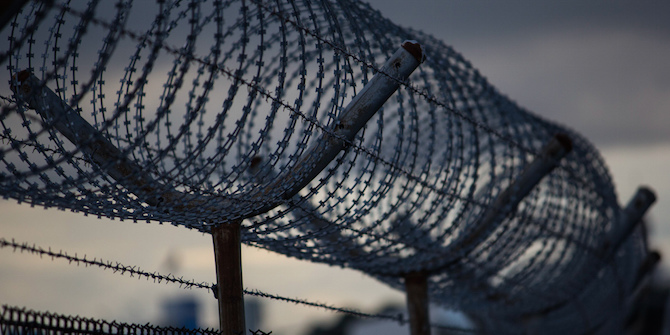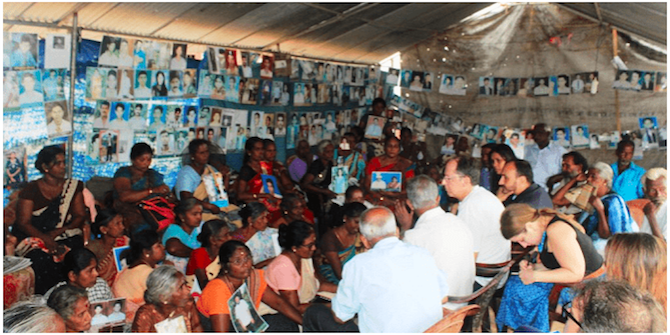By looking critically at several recent natural disasters, a new understanding of the disproportionate impact they can have on different genders can be revealed, argues Lavanya Shanbhogue Arvind (Tata Institute of Social Sciences, Mumbai). Existing gender inequalities are exacerbated in disaster contexts she argues, increasing disaster losses and mortality of women and gender minorities. More and more women and gender minorities have therefore to be brought into decision-making roles to enable need-based policy and intervention.
In recent times, there has been an increasing awareness that women, girls and gender minorities suffer disproportionately during disasters. That disaster mortality is gender-specific has compelled policy-makers to include provisions in global and national disaster management and climate change accords to make them more gender-aware. For instance, globally, the 2015 Paris Agreement and the Sendai Framework for Disaster Risk Reduction carry important priorities to promote gender equitable disaster response, recovery and reconstruction. In India, the Prime’s Minister’s 10-point agenda on Disaster Risk Reduction (2017) calls for a “greater involvement and leadership of women in disaster risk management.”
Although welcome initiatives, these interventions come after much monumental suffering and colossal losses faced by women, girls and gender minorities in disaster situations. Today’s need is to translate the spirit of policy into on-the-ground intervention in order to avoid fatalities. Lessons learnt from key disasters will thus enable a robust gender-sensitive intervention.
The Indian Ocean Tsunami of 2005 that devastated more than 2,000 kilometres of the mainland coastline of India had differential gender impacts. A study commissioned by Oxfam America revealed that, of the disaster affected people, nearly seventy-five percent were women and children. It was found that owing to various patriarchal impositions on modesty and other gender roles, women and girl children were less likely to be provided survival skills such as swimming. Owing to the operation of feelings such as shame and a need to conform to appropriate feminine behaviour, women and young girls would not climb trees to save themselves. The Aravanis, a transgender population in Tamil Nadu found themselves entirely excluded from the relief process owing to pre-existing socio-cultural practices that contribute to their marginalisation.
Of the 1.3 million earthquake affected persons in Nepal (2015), more than half were women. A disproportionate female loss is attributed to the fact that more women were indoors while men were out in the open. The demarcation of the home as a “women’s place,” the private as “her sphere” is both an old feminist lamentation and a contestation, but the loss of life because of such demands is a travesty in need of justice.
These inequities in disaster contexts manifest in several other ways. Since water procurement is considered “women’s work,” women sometimes spend several hours fetching water to carry out household duties. Situations of drought greatly increase female time investment, for women sometimes spend half their day in the arduous pursuit of water in inhospitable topographies.
Women and young girls often have limited access to Early Warning Systems (EWS) giving them very little time to evacuate and communicate with responders. Owing to extreme intra-household inequalities, there is a gender gap in the ownership of mobile phone devices. Over 1.2 billion women in low- and middle-income countries do not use mobile internet. Further, in some cases, early warning messages are transmitted from men to men in public spaces, excluding women from the receiving these messages.
In the 2010 flooding of the Indus river basin that adversely impacted the Sindh, Punjab and, Balochistan regions of Pakistan, more than seventy persons of the displaced people were women. Globally, while exact figures vary, women form the majority of the people displaced on account of climate-related flooding. The increasing frequency of climate-change induced disasters divulge the gendered nature of losses and mortality. Studies demonstrate that in times of natural disasters, the life expectancy of women, though usually higher than male life expectancy globally, are lowered more than that of men.
Developed nations are not excluded from these gender-related inequities. Post Hurricane Katrina that hit the US Gulf Coast in 2005, more than eighty percent of the women were left behind in the city following the storm. Unable to access travel out of the storm-hit city of New Orleans and left with no resources in hand, they had to fend for themselves.
In hostile places such as temporary shelters and refugee camps, women are expected to replicate the “home experience” for their families for they are never absolved of the unequal burdens of child care and elder care. Relief and response are androcentric, for compensation is disbursed to the titleholders of damaged properties and these persons are almost always men. Globally, women are poorer and hungrier than men and these disparities make them even more vulnerable during disasters. Other forms of material losses such as damages to sewing machines and kitchen appliances that women may use for home-based income generation remain uncompensated, rendering them more dependent on male resources. Lack of availability of gender disaggregated data for all disasters is a major impediment to the creation of a mechanism for equitable post-disaster recompense.
Post-disaster lodgings are not the safe havens that they ought to be. A 2015 study by the International Federation of Red Cross and Red Crescent Societies demonstrates that there is an increase in gender-based sexual violence and domestic violence in post-disaster situations. Often these acts of violence occur in shelter homes. The protraction of disaster-induced displacement places women and gender minorities outside secure spaces that they may have negotiated for themselves within familial settings.
These are but the symptoms, the tangible manifestations of gender inequalities that get exacerbated in disaster situations contributing to vulnerability. Pre-disaster social inequalities of women and gender minorities on account of caste, race, ethnicity, religion, disability, nationality, amongst others, are amplified in post-disaster situations. These larger social structures function as various axes of oppression that operate on the gendered identity. If imposed gender roles cause women and gender minorities to be “left behind” in relief and rescue efforts, men are expected to be the “stronger sex” which may place them in unsafe situations. Therefore, an understanding of gender, especially the differential impacts of disasters on different genders, embedded into policy is critical to mitigate loss of life. Policy, in turn, must be upheld in on-field interventions.
The vast literature on global poverty and identity-based discrimination indicate that women are more socially vulnerable, and disaster theorists in turn have argued that social vulnerability translates into disaster vulnerability. Disaster management plans therefore must tackle the gender question by recognizing the critical linkages between social vulnerability, disaster mortality and identity-mediated socio-economic status. More and more women and gender minorities have to be brought into decision-making roles to enable need-based policy and intervention. Culturally sensitive, disaster planning must take gender into account at each stage of preparation, mitigation, rescue, relief, rehabilitation and long-term recovery.
This article gives the views of the author, and not the position of the South Asia @ LSE blog, nor of the London School of Economics. Featured Photo: Big Waves Crashing; Credit: Ree, Pexels.








The best informative blog. Love to follow this blog ma’am